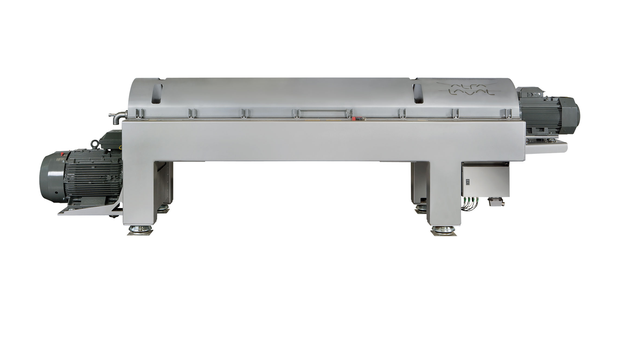P2
Alfa Laval P2 range of decanter centrifuges provides the most cost-effective and high-performance solution for applications in process industries. The P2 decanters are designed for slurries that are often erosive and aggressive.
Alfa Laval P2 heavy-duty decanter centrifuges are specially designed to work effectively in corrosive, abrasive and otherwise aggressive operating environments. This makes them ideal for separation duties in industries such as steelmaking and mining, and in the production of pulp and paper, coke, chemicals and petrochemicals, pigments, polymers and fertilizers.
Alfa Laval P2 decanter centrifuges establish new benchmarks for separating aggressive industrial sludges and slurries more efficiently than ever before, at the same time as ensuring low power consumption and life cycle costs. Using P2 units makes it possible to:
-
boost revenue because the process components have greater commercial value
-
achieve increased cake dryness and thus reduce the costs of solids disposal
-
recover more of the expensive chemical additives used in separation.
All Alfa Laval P2 decanter centrifuges are available in 2-phase and 3-phase versions, and also in ATEX-compliant configurations. Special sealed and purged versions are available for processing flammable feeds.
How it works
Alfa Laval P2 decanter centrifuges are specifically designed to separate sludge or slurries into a solid phase and one or two liquid phases, for the chemical and pulp and paper industries.
Separation takes place in a horizontal cylindrical bowl equipped with a scroll conveyor. The product is led into the bowl through a stationary inlet tube and is then smoothly accelerated in a full-flow feed zone design. Centrifugal forces of up to 3,500 G make the solids accumulate on the inner surface of the bowl.
The conveyor rotates in the same direction as the bowl, but at a different speed. This moves the solids towards the conical end of the bowl. The solids leave the bowl through the solids discharge openings into the casing.
Separation takes place throughout the length of the cylindrical part of the bowl, and the clarified liquid leaves the bowl by flowing over adjustable plate dams into the casing.


